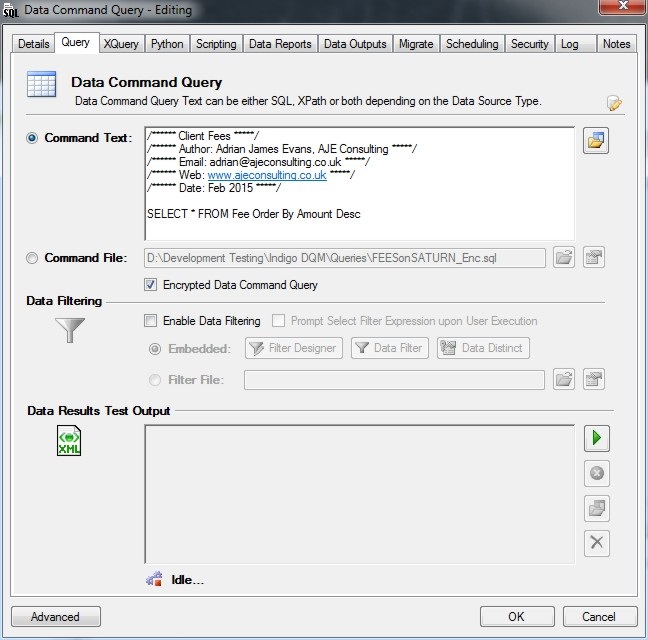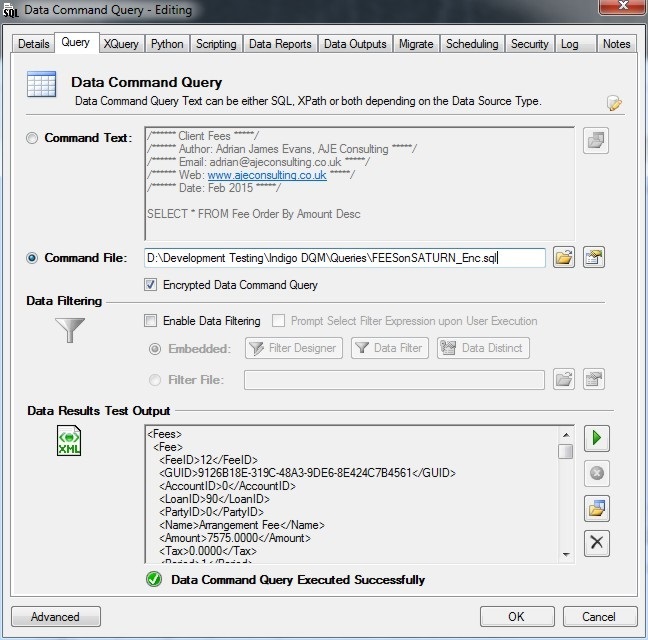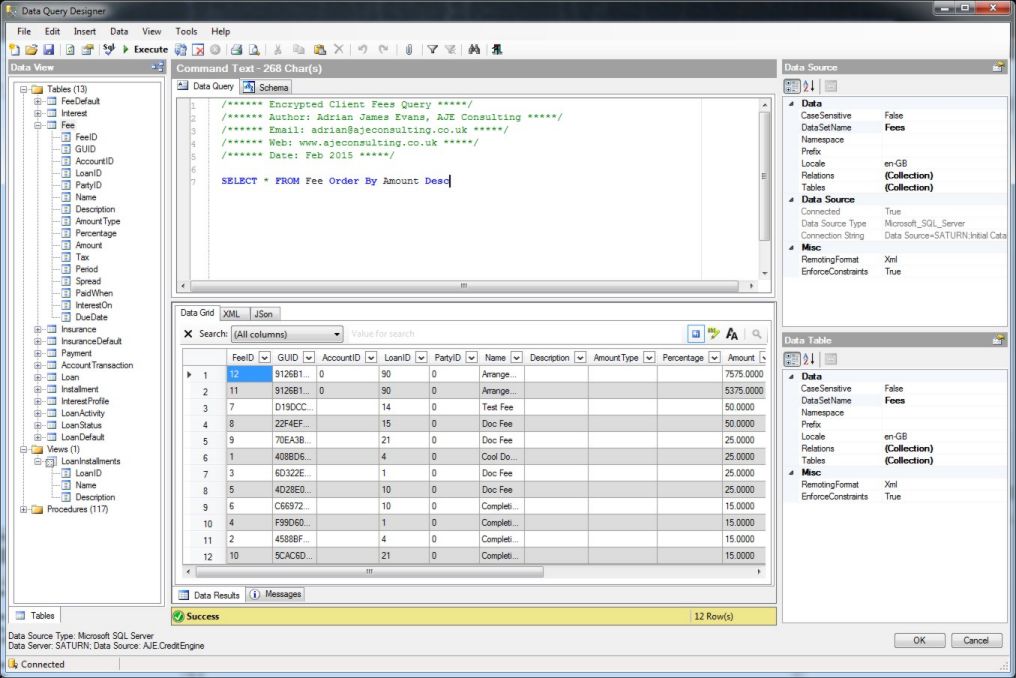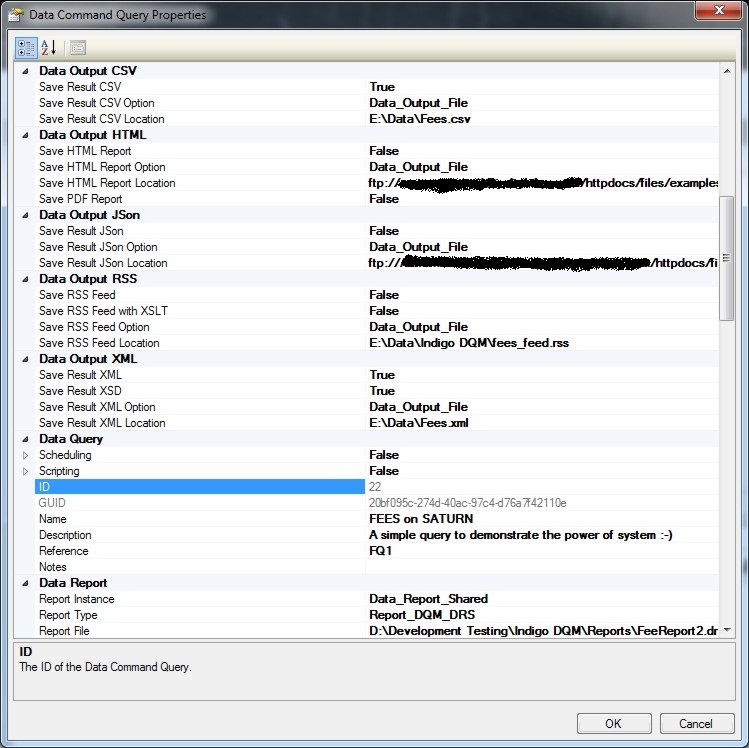Indigo DQM's Data Management Engine (DME) can execute queries and process Data against any type of Data Source using standard relational SQL queries and / or XQuery / XPath.
Select the Query tab for the Data Command and check the radio button for either 'Command Text' or 'Command File'.
The 'Command Text' option will execute the query entered into the text box. Selecting the 'Command File' option will execute queries contained in a shared Command File at the location specified by the URI.

Creating or editing a Data Command will load the Data Schema based on the connection parameters of the Data Source.
Click the button for the Command Text to open in the Data Query Designer.
Test Executing the Data Command Query
Data Command Queries can be tested before deployment on the Query tab.
Click the 'Execute' button to run the Data Command and display the Data Results.

Data Command Files
Data Command Files are useful for sharing Data Queries with multiple Data Commands in the Data Asset Store. If you have a Data Query used by several Data Commands create a Command File by saving the Data Query to File and then pointing the Data Command Query to the Command File. This is a more efficient way to share Command Texts for support and maintenance should the Data Command need changing.

The Command File can be local, a network share or on the Internet. Open the properties page for the location to specify the URI for the File.
Encrypting the Data Command
The Data Command Query can be encrypted for added security using the Advanced Encryption Standard (AES) with a 256-bit encryption key. Check the option and the Data Command will be encrypted in the Data Asset Store. If the option is enabled for the Command File then the Command File must be encrypted by the Encryption Tool. You can save a Data Command Query from the Query Designer and use the Encryption Tool to encrypt the Command File.
A secure password must be setup in 'Program Settings and Options' or applied to an individual Data Asset Store. By default a global encryption password will be used but it is recommenced that you create your own unique password.
Encryption passwords must match when encrypting / decrypting Data. It is recommended that a copy of your password be stored in a secure location. If you lose the password it will be impossible to decrypt any encrypted Data.
Test the Data Result Outputs
Testing the Data Source you can also apply XPath to the Data Source if CSV, JSon or XML. If the Data Source is a Database you can apply SQL and / or XPath to that Database using the SQL dialect for that particular Data Source.
Data Command Query Designer
The Data Query Designer gives a logical view of the Data Schema. All Data Tables, Views and Procedures are shown in the Data View.

The Data Command Query designer allows complex queries to be created and tested before deployment.
Data Command Advanced Properties
Advanced options allow the configuration of extra settings for the Data Command Query.


